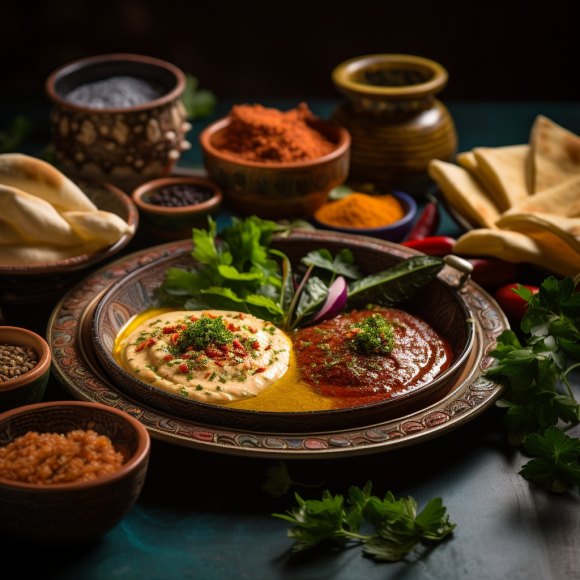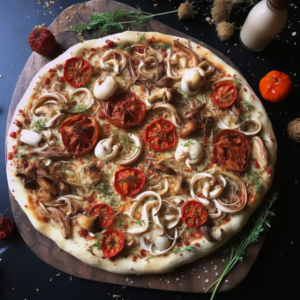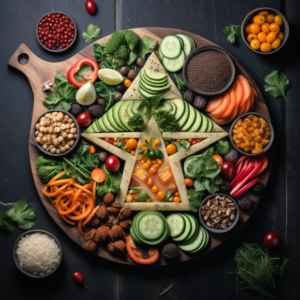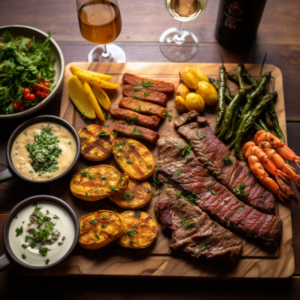Embark on a culinary journey through the vibrant flavors and rich aromas of Lebanese cuisine, a treasure trove of Middle Eastern gastronomy. From the bustling streets of Beirut to the serene villages of the countryside, Lebanon offers a culinary experience like no other. In this tantalizing article, we delve into the wonders of Lebanese cuisine, exploring its traditional dishes, iconic ingredients, and the cultural heritage that has shaped this culinary gem.
Section 1: The Essence of Lebanese Cuisine
We begin by unraveling the essence of Lebanese cuisine, known for its bold flavors, fresh ingredients, and vibrant spices. From the tangy kick of lemon and sumac to the aromatic notes of garlic and olive oil, Lebanese dishes capture the essence of the Mediterranean. We explore the foundational ingredients that define Lebanese cooking, including za’atar, tahini, pomegranate molasses, and the aromatic spice blend known as baharat.
Section 2: Iconic Lebanese Dishes
Delve into the iconic dishes that have put Lebanese cuisine on the global culinary map. From the mouthwatering mezze spreads to the hearty and flavorful main courses, Lebanese cuisine offers a diverse array of dishes. Explore the succulent flavors of shawarma, the fragrant rice and meat combination of kabsa, the wholesome vegetarian delights of falafel and tabbouleh, and the indulgent sweetness of baklava. Lebanese cuisine offers a culinary adventure for every palate.
Section 3: The Art of Mezze
Mezze, a selection of small appetizers and shared plates, is an essential element of Lebanese dining. We delve into the art of mezze, exploring the diverse array of dishes that grace the table. From the creamy hummus to the smoky baba ganoush, the tangy muhammara to the flavorful kibbeh, we explore the textures, flavors, and cultural significance of these delectable bites. Discover the convivial nature of mezze and its role in Lebanese hospitality.
Section 4: Regional Flavors and Culinary Traditions
Lebanon’s diverse regions contribute to the culinary tapestry of the country, each offering its own unique flavors and specialties. We explore the distinct characteristics of regional Lebanese cuisines, such as the seafood delights of the coastal areas, the hearty stews and mountain flavors of the northern regions, and the aromatic dishes influenced by the Bekaa Valley. Delve into the regional diversity that adds depth to Lebanese gastronomy.
Section 5: Sweets and Savoring the Sweet Life
Lebanese cuisine is renowned for its delectable sweets and desserts, showcasing a harmonious blend of flavors and textures. We delve into the world of Lebanese sweets, from the delicate layers of knafeh to the rose-scented delights of maamoul and the syrup-soaked baklava. Explore the art of pastry-making, the significance of sweets in Lebanese culture, and the pleasure of savoring the sweet life.
Section 6: Lebanese Cuisine Goes Global
Lebanese cuisine has gained international acclaim, with Lebanese restaurants flourishing in cities around the world. We delve into the global popularity of Lebanese cuisine and its adaptation to suit diverse palates and dietary preferences. Discover the fusion of Lebanese flavors with international cuisines, as well as the rising trend of vegetarian and vegan Lebanese dishes. Lebanese gastronomy continues to captivate and entice food enthusiasts worldwide.
Conclusion
Lebanese cuisine, with its vibrant flavors and rich cultural heritage, invites us to indulge in a culinary adventure that captures the essence of the Middle East. From the mezze spreads to the aromatic main courses and delectable sweets, Lebanese cuisine is a celebration of flavors, traditions, and shared moments of joy. As we conclude this culinary exploration, may the aromas of Lebanon continue to inspire and entice you to savor the wonders of this remarkable cuisine.



